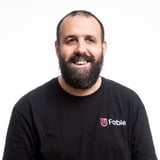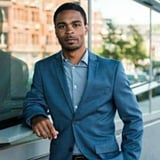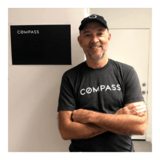Log in or create a free Rosenverse account to watch this video.
Log in Create free account100s of community videos are available to free members. Conference talks are generally available to Gold members.
Summary
This will be an informal conversation between Alison Rand and Sarah Brooks. We discuss Sarah's experience applying service design and design research in both the public and private sector to create organizational change that delivers positive outcomes to people. We touch on questions of working at different scales, within different types of organizational structures and business models.
Key Insights
-
•
Service design and design operations are deeply connected when scaling design impact across teams and organizations.
-
•
Sarah Brooks’ career spans startups, nonprofit social impact, government innovation, and large enterprise, showing diverse contexts for design leadership.
-
•
The Presidential Innovation Fellowship program uniquely integrates private sector innovation into federal agencies via entrepreneurial residencies.
-
•
Ethnographic research at the VA revealed complex barriers veterans face navigating vast healthcare and benefits systems.
-
•
Large organizations require both top-down support and grassroots momentum to effect meaningful cultural and systemic change.
-
•
Changing a deeply rules-based government culture involves fostering common-sense empathy and trust among civil servants.
-
•
Storytelling with human-centered design evidence can influence leadership more effectively than abstract data alone.
-
•
Human-centered design is evolving toward life-centered design, recognizing interdependence beyond just humans within ecosystems.
-
•
Convening people across silos benefits from respect, deep listening, psychological safety, and structured yet informal facilitation.
-
•
The COVID-19 pandemic has exposed work vulnerabilities and accelerated empathy and vulnerability in professional environments.
Notable Quotes
"Design operations is really about how we’re scaling the work, thinking our practices, and serving cross-functional teams."
"At the VA we explored how veterans understood or didn’t understand the services they were eligible for and uncovered many blockers."
"You need support from the top down and from grassroots; those two have to meet in the middle to make change happen."
"Changing people’s relationship with change is key, especially where rules-based culture can stifle innovation and risk-taking."
"There’s no other theory of change I’ve seen more true in large organizations than requiring dual-level support."
"We live in a biosphere that’s collapsing, so maybe we should try life-centered design rather than just human-centered design."
"People often go along with the outcome if they feel they were part of the process."
"If people just got in the room and I did nothing except take a seat, everything would be fine."
"COVID forced all of us into vulnerability, letting us see each other as humans beyond our work roles."
"Qualitative data is data. It’s okay to be informal and human when designing complex systems."
Or choose a question:
















More Videos

"At Brex, design ops supports a broad range of design disciplines and also partners with engineers and marketers."
Ned Dwyer Emily Stewart James WallisThe Intersection of Design and ResearchOps
September 24, 2024

"Hiring specs for federal designers don’t exist as we expect—jobs are often classified as public affairs or other unrelated titles."
Michael LandEstablishing Design Operations in Government
February 18, 2021

"With cloud apps, users don’t get to choose when to upgrade, which challenges maintaining accessibility continuity."
Sam ProulxTo Boldly Go: The New Frontiers of Accessibility
November 18, 2022

"A UX partner needs to develop a thick skin when engaging senior VPs and directors."
Vasileios XanthopoulosA Top-Down and Bottom-Up Approach to User-Centric Maturity at Scale
January 8, 2024

"Younger visitors are nearly twice as likely to engage with digital chat or help but are less satisfied afterward."
Andrew Custage Michael MallettThe Digital Journey: Research on Consumer Frustration and Loyalty
March 29, 2023

"Designers would often say, I didn’t realize research was this hard or what you go through is traumatic."
Marjorie Stainback Kelsey KingmanTransforming Strategic Research Capacity through Democratization
October 24, 2019

"Disconnection is the breeding ground for conflict."
Alla WeinbergCross-Functional Relationship Design
December 6, 2022

"Sending reports early and inviting comments turns the insight session into more of a discussion than a presentation."
Jerome “Axle” BrownHow to Use Self-Directed Learning to Ensure Your Research Insights are Heard and Acted Upon
March 11, 2021

"Our offices have stand-up desks, nice collaboration areas, and comfy seating with a fresh, on-brand look."
Jen Crim Jess Quittner Saritha Kattekola Alex Karr Gurbani PahwaCulture, DIBS & Recruiting
June 11, 2021

















